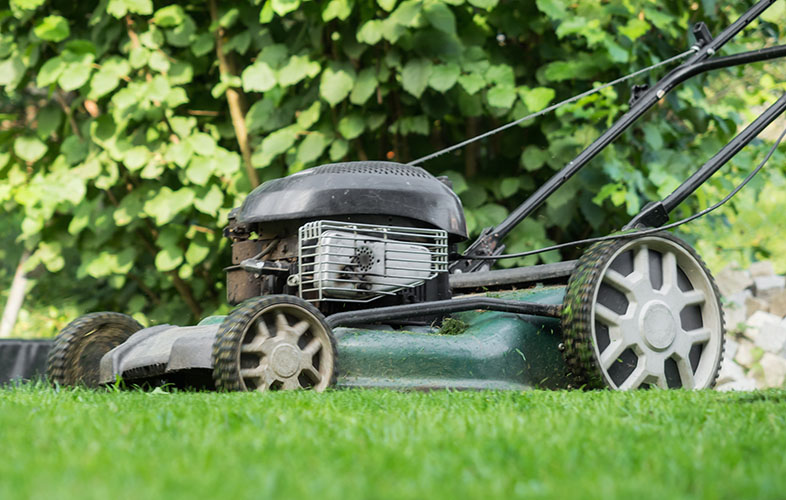As water becomes limited, your turf grass will give off signs that it’s in need of watering. Learn to spot these warnings so you can alter your lawn maintenance schedule to avoid drought stress and keep your lawn green and healthy.
Stage 1: Early Drought Stress Signs
During the first stage of drought stress, your turf grass will take on a bluish-gray appearance. Take a walk on your lawn and look for footprints left behind, a key indicator of a dry lawn. Lawn care tips in this stage include regular watering to help the turf grass regain its moisture and recover within a day or two.
Stage 2: The Tipping Point
The second stage of drought stress is considered the tipping point because it’s the last stage where regular watering can revive your lawn. It’s also the phase right before all lawn growth stops. During stage two, turf grass growth is slowed and your lawn may appear patchy. This is due to unequal moisture reserves in your soil—some parts have more reservoirs, some less.
Blades of grass start to fold in an attempt to conserve moisture—areas of grass with compacted or poor soil dry out first. Lawn care tips at this stage include regular watering to revitalize the lawn over a period of three to five days.
Stage 3: Pre-dormancy
The preliminary stage to dormancy, the third stage is when your lawn shuts down all—or almost all—growth and begins to ration resources. Your lawn takes on a greenish-brown color. Any mowing during this period can damage the leaves, stems and crowns—from the mower’s wheels alone.
To stimulate recovery, aggressive irrigation or heavy rainfall is needed over a period of several days. When your lawn finally replenishes enough moisture to begin repairing itself, you can expect recovery to take 10 to 14 days if watering returns to normal.
Stage 4: Dormancy
The fourth stage is pure survival mode for your turf grass. There is no effort made to retain greenness above ground—your lawn will be completely brown. Turf will start to thin. Lawn care tips for recovery at this stage include thorough, deep and repeated watering or heavy rainfall for a period of 14 to 21 days. Unfortunately, any sections of your lawn suffering from poor soil may never recover.



 Branch Finder
Branch Finder













Facebook
X
Youtube
Copy Link
Email